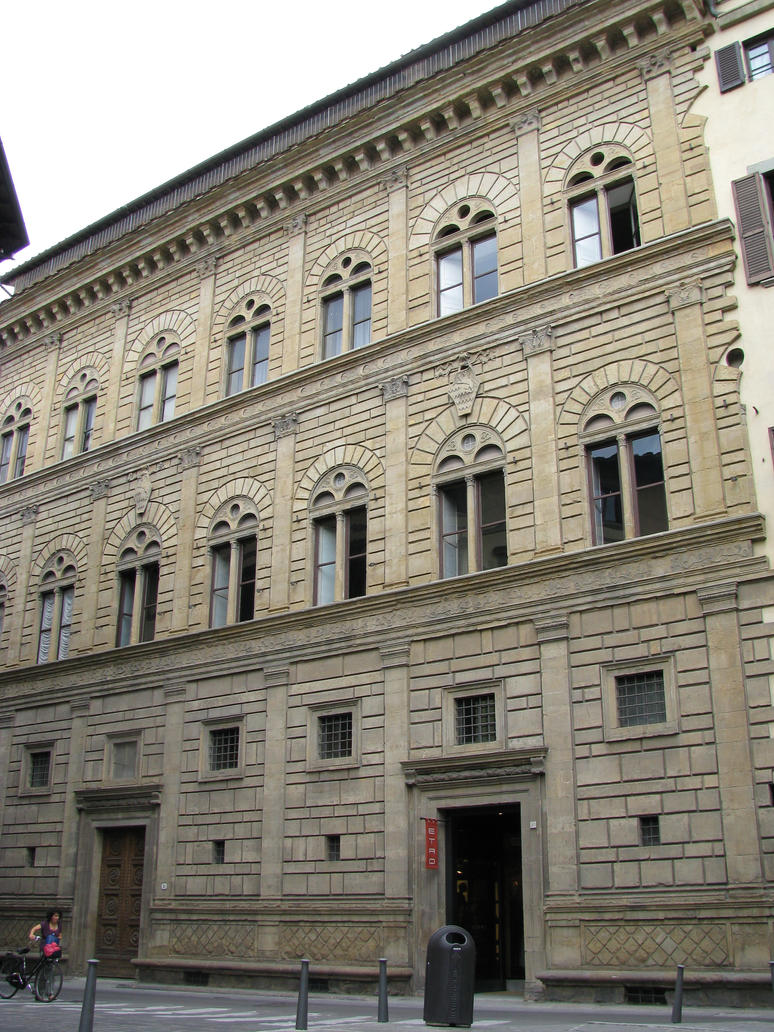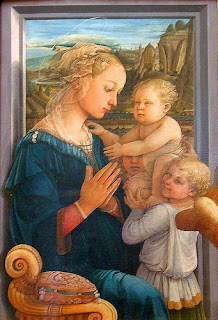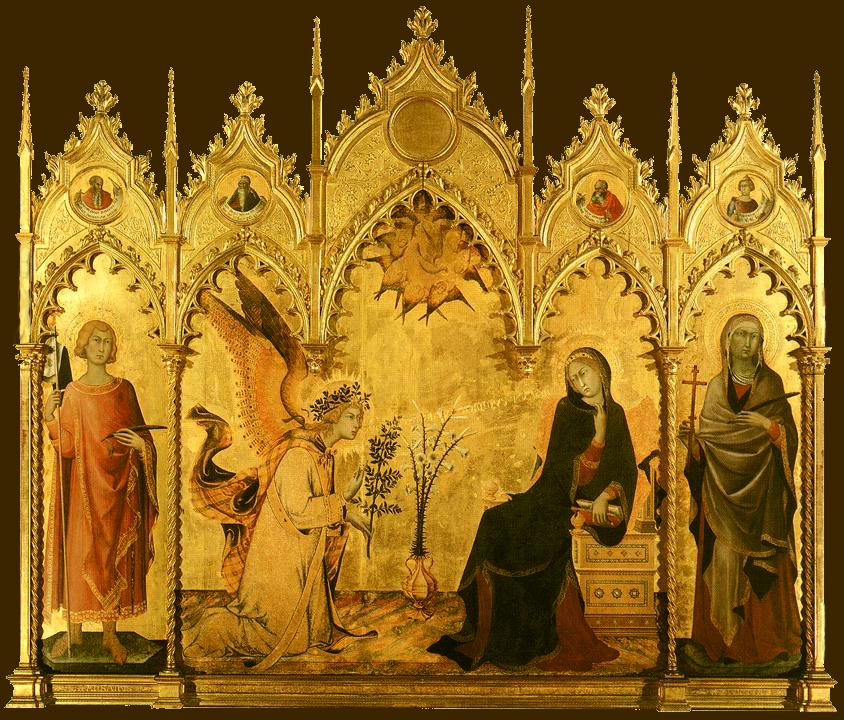This architecture named
Palazzo Rucellai was designed by Leon Battista Alberti and executed by Bernardo
Rossellino from 1452-1470. Alberti adapted superimposed orders or the Roman use
of different orders for each story to the edifice. As a result, he created an
illusion that Palazzo Rucellai becomes lighter toward its top which is also my
interest of the structure.
Sunday, September 30, 2012
Fra Filippo Lippi- Madonna With Child and Angle
This painting, Madonna With Child and Angles, is an
artwork of Fra Filippo Lippi. He painted the picture from 1460-1465 using tempera
on wood technique. I like this artwork, because it creates a more realistic
picture of the holy family than any other artworks before. The color is vivid
which also carries the feeling of humanization into the scene.
Sunday, September 23, 2012
Claus Sluter- The Well of Moes
This fountain named The Well of Moes was designed by Claus Sluter in Chartreuse de
Champmol, Dijon, France in 1395-1406. It was a lime stone sculpture and painted
and gilded by Jean Malouel. I found this
artwork interesting for which it supposed to be a water source for the monastery,
but water never spout from the fountain since the monastery committed to silence.
Also even though the figures on the fountain recall French Gothic, the sculptures
are far more realistic.
Jan van Eyck - Giovanni Arnolfini and his Wife
This artwork named Giovanni Arnolfini and his Wife was painted by Jan van Eyck using oil
on wood in 1434. The picture has two versions of interpretations. The first one
is said that Jan van Eyck depicted the wedding of Giovanni, an Italian
Financier, and his bride at Giovanni’s home. The second version states that the
scene in the painting is a legal scene which depicts Giovanni gave his wife a
special permission. Despite of the different interpretations, the picture
mainly depicts a vow that was made between Giovanni and his wife and Jan van
Eyck was the witness. This picture is interesting to me because several symbolic
objects appear in the scene. For example, Giovanni’s shoes are near the window
which represents the symbolic of a man who is always the one working outside,
and the wife is next to the bed which characterizes the symbolic of a
woman who should always takes care housing works. The colors of the picture are
also vivid which help create three dimensional illusions as well as the depth
of the painting.
Sunday, September 16, 2012
Giotto di Bondone - Lamentation 1305
This artwork titled Lamentation was painted by Giotto di
Bondone in 1305 at the Arena Chapel which locates in Padua, Italy. This
painting depicts the moment when Christ had been removed from the cross and his
follower gathered around him. I like this picture because all of the elements
were illustrated vividly and colourfully. I can feel the movement in the picture
in which the people are mourning for the death of Jesus and the angles fly down
from the sky to join the lamentation. The orientation of the picture makes viewers to focus on the main image which is Christ laying around his follower.The artist also used fresco painting style
which create depth, mass and volume. This method also indicates a transition from
medieval art to renaissance art.
Sunday, September 9, 2012
Annunciation with St. Margaret and St. Ansanus
This art work titled
Annunciation with St. Margaret and St. Ansanus was painted by the Italian
Gothic artists, Simone Martini and Lippo Memmi, in 1333 for the Chapel of Sant’
Ansano in Siena Cathedral. I like this picture because it depicts vividly the Annunciation
in which angel Gabriel announced to Virgin Maria that she would become the mother
of Jesus. With the bright gold background and affluent polish of all characters
in the painting, the picture shows the prestige of the commission in Annunciation
day.
Subscribe to:
Posts (Atom)





